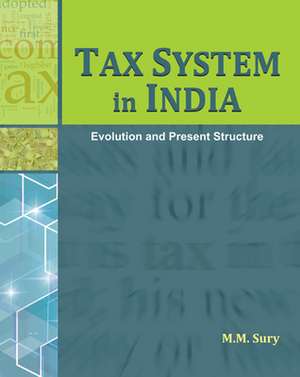Tax System in India: Evolution & Present Structure
Autor M. M. Suryen Limba Engleză Hardback – aug 2015
Preț: 741.77 lei
Preț vechi: 834.18 lei
-11% Nou
Puncte Express: 1113
Preț estimativ în valută:
141.93€ • 148.19$ • 117.47£
141.93€ • 148.19$ • 117.47£
Carte indisponibilă temporar
Doresc să fiu notificat când acest titlu va fi disponibil:
Se trimite...
Preluare comenzi: 021 569.72.76
Specificații
ISBN-13: 9788177084108
ISBN-10: 8177084100
Pagini: 446
Dimensiuni: 190 x 245 x 38 mm
Greutate: 1.23 kg
Editura: New Century Publications
Colecția New Century Publications (IND)
ISBN-10: 8177084100
Pagini: 446
Dimensiuni: 190 x 245 x 38 mm
Greutate: 1.23 kg
Editura: New Century Publications
Colecția New Century Publications (IND)
Cuprins
Taxes in Ancient India & During Mughal Period; Taxes during British Rule; Constitutional Provisions Pertaining to Taxes; Socio-Economic Objectives of Tax Policy; Tax Reforms Since 1991; Trends in Tax-GDP Ratio; Trends in the Relative Revenue Significance of Direct & Indirect Taxes; Buoyancy & Elasticity of Tax Revenue; Distribution of Tax Burden (Tax Incidence); Tax Evasion; Trends in the Level & Composition of Central Taxes; Income Tax; Wealth Tax; Union Excise Duties; Taxation of Services; Direct Taxes Code (DTC); National Level Goods & Services Tax (GST); Trends in the Level & Composition of State Taxes; Taxation of Agricultural Income; Sales Tax & State Level VAT; Centre-State Financial Relations; State-Local Financial Relations in India; International Double Taxation; Indian Law on Double Tax Relief; Select Bibliography; Index.
